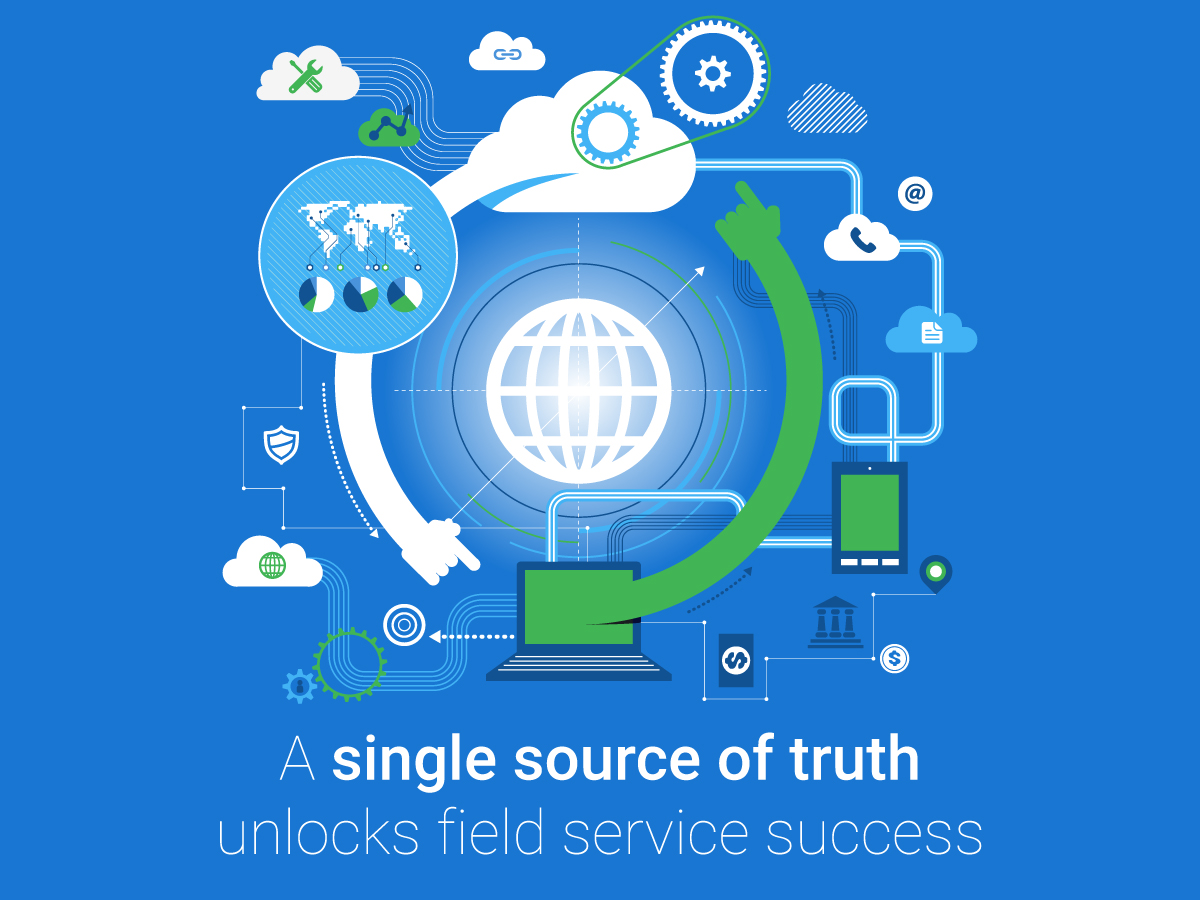
Data is more than the buzzword it's become in recent years. It's a crucial business tool that professionals cannot afford to gloss over any longer.
From updated catalogues to stock adjustments, changing schedules to new pricing, asset allocation to site information, data is everywhere in field service businesses and it is constantly evolving and changing.
The real business challenge is how to manage it all.
Without an organised way to manage information, and ensure its accuracy and consistency throughout a business, data silos form. These are multiple, standalone, sources of information within a single business, and they can lead to competing versions of the truth. And, where these form, a treacherous downfall of unproductivity and inaccuracy follows.

Some characteristics include:
-
Costly onboarding
-
Inaccurate reporting
-
Duplicate data entry
-
Errors in information
-
Untimely and extensive maintenance/management required for systems
-
No true version of information that can be agreed upon
-
Unnecessary time spent on verifying information and its source.
Data silos eat away at time, accuracy and even profits. Workflows are blocked, and individual staff members quickly become cornerstones to business operations.

By connecting your business with a centralised tool, a Single Source of Truth (SSOT).
The thinking behind SSOT is this: don't store your data in more than one place - it opens up the door for human error and influence. Instead, get your employees all speaking the same language with a single system that manages multiple departments and their information.
With a single source of truth, data updates in one department are immediately reflected in others, manual and duplicate entry is minimised, and information can be accessed quickly and easily.
An SSOT means business data is connected, it's integrated, it flows seamlessly throughout the office from one department to another, and consequently allows for the standardisation of some processes, like accounting, onboarding, scheduling and so on.

Ultimately, eradicating data silos and having a centralised tool to control and disseminate business information will greatly improve your processes and workflows, and guide your organisation into a successful future.
But, if that isn't motivating enough, there's plenty of other advantages to consider:
-
Better response times - process improvements, visibility and minimal data conflicts means your team is operating better than ever. You can accomplish tasks and respond to customer requests faster.
-
Data integrity - one place for all your data makes it fast and easy to update information and maintain accuracy and consistency across the business.
-
Data security - a single, complete, data storage location minimises leaks and the risk of unauthorised access to business information.
-
Reduced costs - a single data set means less time dedicated to data entry, less resources to ensure power supply and easier maintenance.
-
Single point of control - an integrated, single, system of processes means simplified workflows and increased productivity and efficiency.
-
Elimination of redundant data - say goodbye to duplicate records and multiple cases of manual entry. No more slowed decision due to the need to verify information or entry errors impacting final numbers.
These are also only short-term benefits you can expect with an SSOT. When you consider the long-term, it's even more exciting. You can achieve changes like:
-
Competitive advantage as a result of business improvements.
-
Accurate reporting and analytics to support better and faster decision-making.
-
Easy access to a full and complete view of a business, whenever you need.
-
More comprehensive monitoring of important processes.
-
Renewed and strong trust and confidence in your information.

An SSOT is, sadly, not a wholesale item that you can order online and ship to your office, it is a concept, a business approach.
However, there are certain products in the field service technology market today that wholly encapsulate the SSOT line of thinking: job management and asset maintenance software.
More and more job management systems are being developed that allow businesses to comprehensively manage their information, workflows and processes.
Their cloud-based storage approach makes data quick and easy for staff to access, and can be refreshed to reflect the latest updates using an internet connection.
Job management software allows staff in any department to update or access information as they need it, maintaining consistency and accuracy across the board.
With these types of systems, accounting teams can access invoices online, schedulers can access and update jobs, and technicians can then see changes reflect on their smartphone or tablet in the field.
Implementing job management software is a step in the right direction when it comes to managing your data and being able to use it to better your business.